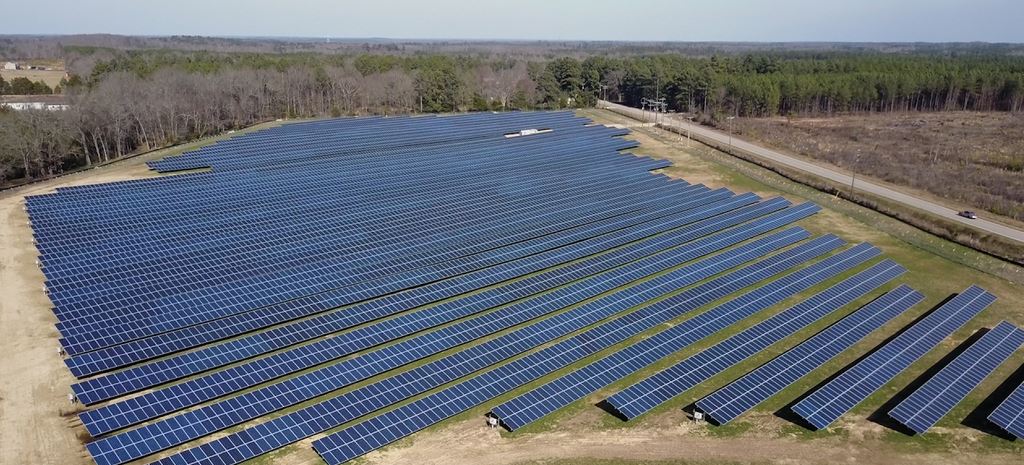Last Friday, the South Carolina Public Service Commission (SCPSC) voted unanimously to raise the rate Dominion Energy must pay to independent solar providers under the Public Utility Regulatory Policies Act in the company’s service area.
The new decision reversed one made just a month before, when the same regulators decided by a 6 to 1 vote to have Dominion pay solar providers $21.43/MWh over 10-year contracts, a compensation agreement that Conservation Voters of South Carolina (CVSC) described as “a solar ‘doomsday’ scenario.”
The new rates will be determined by peaks and seasons. That means there are four different rates: peak off-season ($32.52/MWh); off-peak, off-season ($28.93/MWh); peak on-season ($31.05/MWh); and on-season, off-peak ($27.51/MWh).
Dominion claims that the new rates will have the immediate effect of raising customer bills once instituted.
The change in thinking came after the initial vote to cut the rates, as a collection of environmental groups including the Southern Alliance for Clean Energy (SACE), South Carolina Coastal Conservation League (CCL) and the South Carolina Solar Business Alliance filed a pair of petitions to rehear the case. The petitions drew the attention of Commissioner Swain Whitfield who filed a motion to reconsider.
The new decision is being met with praise by solar supporters in the area, as well as nationally. Maggie Clark, state affairs senior manager of the Southeast for SEIA, said, “We’re not out of the woods yet, but this was the right decision by the South Carolina Public Service Commission, though contract tenor is still an outstanding issue to be resolved in the coming weeks. South Carolinians made their support for solar and energy competition clear by passing the Energy Freedom Act. Now we must enact rates and contract terms that promote competition and honor the intent of the legislation.”
As Clark alluded, the value and terms of PURPA contracts in South Carolina is not yet finalized. Dominion will still review the commission’s final order and, moreover, there is an upcoming hearing to discuss whether or not the commission should lengthen contract terms. Contracts currently sit at 10 years, which leans on the short side, but is by no means unheard of. While that length would have been considered far too short less than a decade ago, the environment has changed.
According to Eddy Moore, Energy and Climate Program Director for the Southern Coastal Conservation League, “PURPA zen” is achieved when contract lengths, compensation rates and integration charges align to give financiers confidence in projects.
“A lot of things have to align for it to be workable for the development of any significant amount of renewable energy. While the decision is a real positive step, the outcome is not yet fully viable… If you have a 100-year contract, but the price is $10/MWh, you’re not building any solar farms. If you have a $40/MWh price, but one-year contracts, you’re not building any solar projects either. Somewhere there’s a sweet spot where you have a high enough price and contract terms, with that variable integration charge, too.”
As it stands today, the integration charge is $0.96/MWh, as voted on by the commission. This is a temporary figure, however, one which will exist only until a more accurate rate is decided upon from an integration study. The charge has been a chief concern of Bryan Jacob, the Solar Program Director at SACE.
“The variable integration charge is a component where [SACE and CCL] had argued for zero variable integration charge until one could be transparently and definitively decided upon. The way they originally ruled it, it was around $2.29/MWh. Now this, the $0.96/MWh, even though we wanted zero, is within striking distance and it’ll be moved up or moved down as the actual costs are refined over time, said Jacob.
Moore and Jacob joined Clark’s camp, with Jacob referring to the common theme of ‘cautious optimism’ and Moore expressing feelings on the new developments as “pleased and guardedly optimistic.”
This content is protected by copyright and may not be reused. If you want to cooperate with us and would like to reuse some of our content, please contact: editors@pv-magazine.com.









By submitting this form you agree to pv magazine using your data for the purposes of publishing your comment.
Your personal data will only be disclosed or otherwise transmitted to third parties for the purposes of spam filtering or if this is necessary for technical maintenance of the website. Any other transfer to third parties will not take place unless this is justified on the basis of applicable data protection regulations or if pv magazine is legally obliged to do so.
You may revoke this consent at any time with effect for the future, in which case your personal data will be deleted immediately. Otherwise, your data will be deleted if pv magazine has processed your request or the purpose of data storage is fulfilled.
Further information on data privacy can be found in our Data Protection Policy.